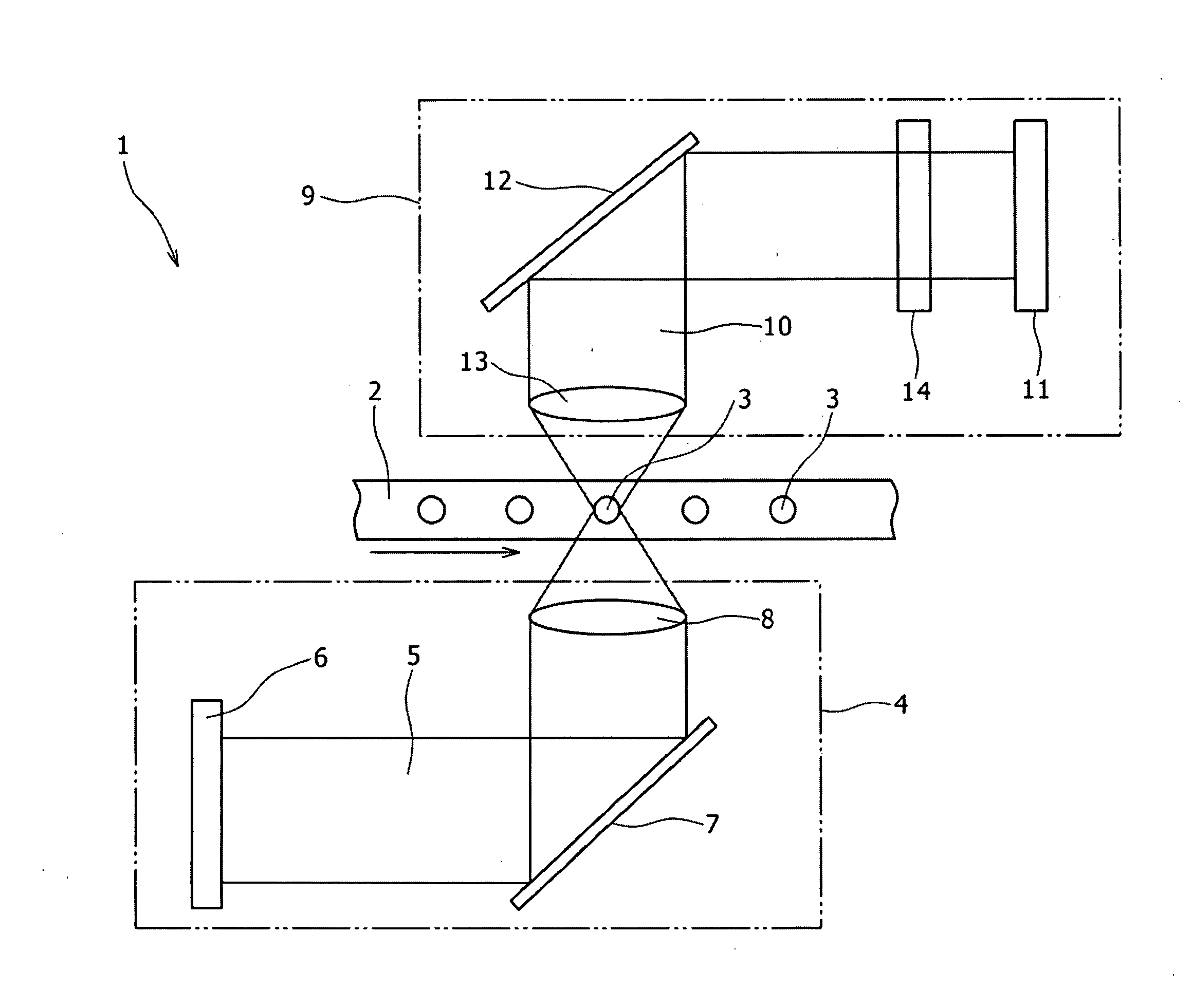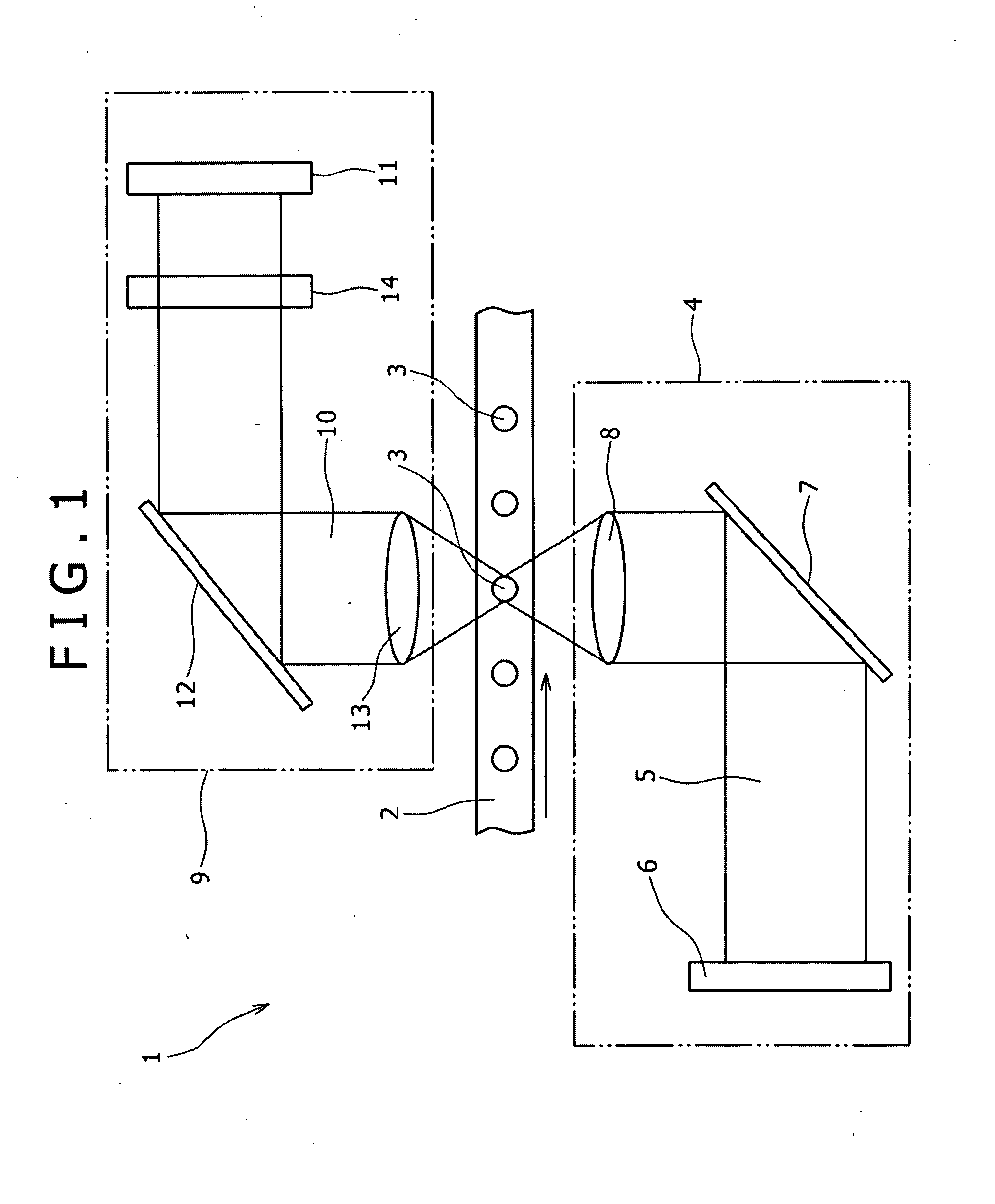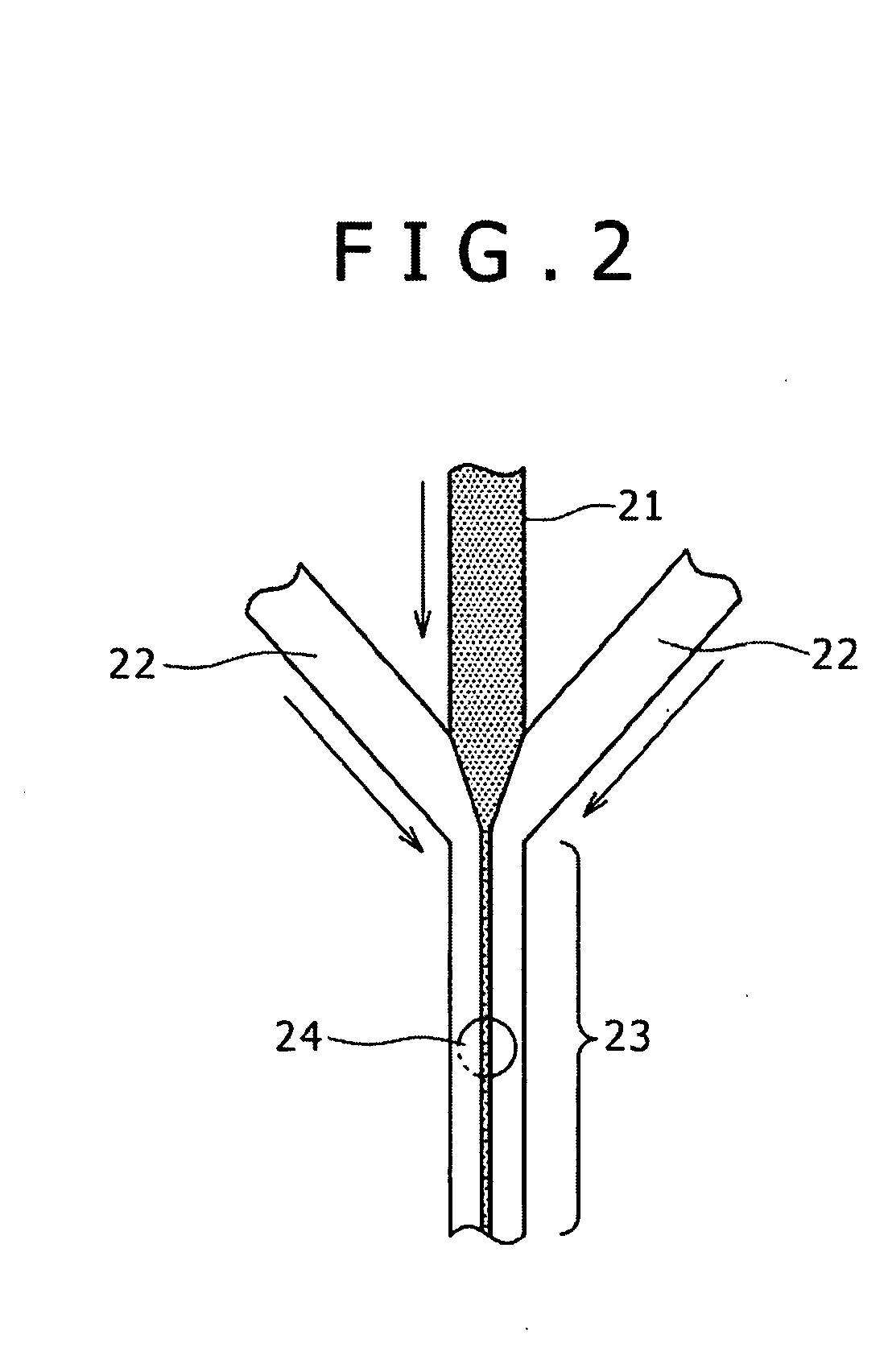Optical detection method and optical detection apparatus for a fine particle
a detection method and optical detection technology, applied in optical radiation measurement, fluorescence/phosphorescence, nuclear engineering, etc., can solve the problems of reducing the accuracy of the fluorescent light correction described above and the data analysis carried out based on the result of the fluorescent correction, affecting the accuracy of the analysis itself of the fluorescent light output signal, and affecting the accuracy of the fluorescent light correction. , to achieve the effect of reducing the damage to and deterioration of the fine particle by the laser beam,
- Summary
- Abstract
- Description
- Claims
- Application Information
AI Technical Summary
Benefits of technology
Problems solved by technology
Method used
Image
Examples
second embodiment
[0068]Now, a method of optically detecting a fine particle qualified with two or more different fluorescent dyes as the present invention is described. For example, where a fine particle is qualified with two or more fluorescent dyes having excitation wavelengths different from each other, it is necessary to irradiate two or more laser beams having different wavelengths from each other upon the fine particle. Therefore, in the present embodiment, two or more pulse lasers having wavelengths λ different from each other are irradiated from the light irradiation section 4 of the optical detection apparatus 1 upon a fine particle with phases thereof displaced from each other while the pulse intensity is modulated.
[0069]FIG. 6 shows a graph wherein the axis of abscissa is the time and the axis of ordinate is the intensity and illustrates an example of an irradiation pattern of laser beams according to the optical detection method of the present embodiment. Referring to FIG. 6, in the dete...
first embodiment
[0080]It is to be noted that the configuration and the effect of the other part than that described above of the optical detection method of the present embodiment are similar to those of the detection method of the first embodiment described hereinabove.
[0081]Now, an optical detection method according to a third embodiment of the present invention is described. The detection method of the present embodiment is similar to the detection methods of the first and second embodiments described hereinabove except that an ultrashort pulse laser beam of a comb shape (hereinafter referred to as comb-like pulse) is used for laser beams to be irradiated from the light irradiation section.
[0082]FIGS. 9A and 9B show irradiation patterns when a comb-like pulse laser beam s irradiated upon a cell A and another cell B which have different damage intensities, respectively. Meanwhile, FIGS. 10A and 10B show irradiation patterns when a comb-like pulse laser beam is irradiated upon fine particles quali...
PUM
 Login to View More
Login to View More Abstract
Description
Claims
Application Information
 Login to View More
Login to View More - R&D
- Intellectual Property
- Life Sciences
- Materials
- Tech Scout
- Unparalleled Data Quality
- Higher Quality Content
- 60% Fewer Hallucinations
Browse by: Latest US Patents, China's latest patents, Technical Efficacy Thesaurus, Application Domain, Technology Topic, Popular Technical Reports.
© 2025 PatSnap. All rights reserved.Legal|Privacy policy|Modern Slavery Act Transparency Statement|Sitemap|About US| Contact US: help@patsnap.com



